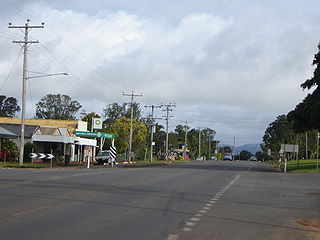This page is based on this
Wikipedia article Text is available under the
CC BY-SA 4.0 license; additional terms may apply.
Images, videos and audio are available under their respective licenses.
The Otati, or Wutati, were an Indigenous Australian people of central and eastern Cape York Peninsula in northern Queensland, according to Norman Tindale, though the ethnonym may designate the same people as the Wuthathi.
The Ngadjunmaia are an indigenous Australian people of Western Australia.
The Ithu were an indigenous Australian people of the eastern coast of the Cape York Peninsula, northern Queensland.
The Waljen are an indigenous people of Western Australia, in the Goldfields-Esperance area.

The Wakaya are an indigenous Australian people of the Northern Territory.
The Mandara were an indigenous Australian people of the Pilbara region of Western Australia. They are extinct, having been absorbed into neighboring peoples, and their language is unrecorded.
The Tenma or Thiin were an indigenous Australian people of Western Australia.
The Malgana were an indigenous Australian people of Western Australia.
The Ngurawola were an indigenous Australian people of the state of Queensland.
The Mbara, or Mitjamba, were an indigenous Australian people of the state of Queensland.
The Muragan were possibly an indigenous Australian people of the state of Queensland. They may have spoken Kunjen, or indeed merely be a mishearing of some Kunjen dialect rather than an actual people.
The Kokobididji were an indigenous Australian people of the state of Queensland.
The Kokobujundji were an indigenous Australian people of the state of Queensland.
The Lanima were an indigenous people of the state of Queensland.
The Jokula (Yukulta) were an indigenous Australian people of the state of Queensland.
The Djakunda were an indigenous Australian people of the state of Queensland.
The Kokopera, also written Koko Bera, are an indigenous Australian people of the Cape York Peninsula of Northern Queensland.
The Koko Njekodi (Guugu-Nyiguudyi) were an indigenous Australian people of Northern Queensland.
The Kokowalandja were an indigenous Australian people of northern Queensland.
The Kongabula were an indigenous Australian people of the state of Queensland.



